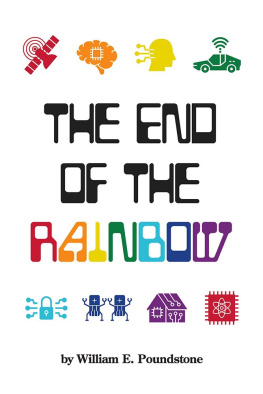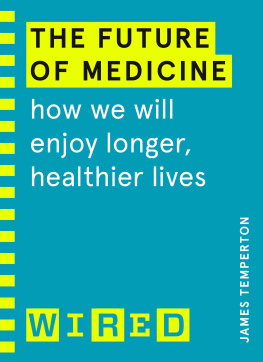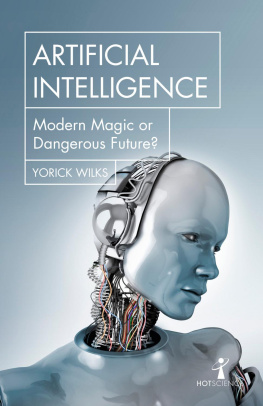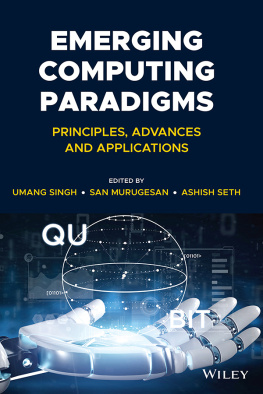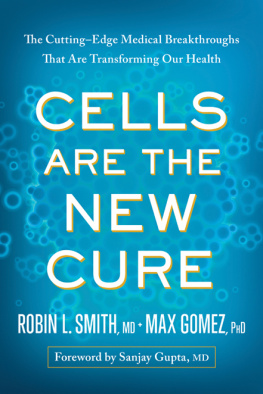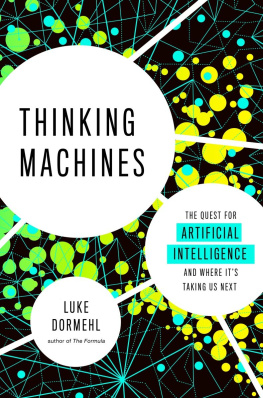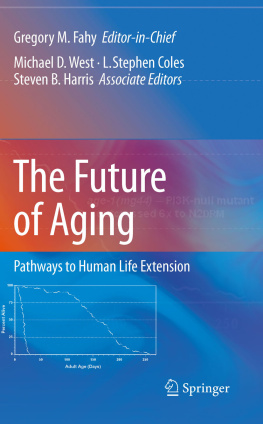2022 William E. Poundstone
All rights reserved. This book or any portion thereof may not be reproduced or used in any manner whatsoever without the express written permission of the publisher except for the use of brief quotations in a book review.
ISBN 978-1-66784-442-8 (print)
ISBN 978-1-66784-443-5 (eBook)
All rights reserved.
Id like to thank my Mom and Dad for their support and helpful advice during the writing of this book. I also thank my sister for her encouragement.
Forward
A s a teenager, I loved reading books that made bold predictions that about the futurepredictions about the way our world would look and the lives we would lead. I appreciated the optimism the authors portrayed in predicting that humankind would be released from so many miseries such as hunger, disease, and destruction from weather-related events. The authors didnt stop there thoughthey predicted technological breakthroughs that would radically change every day routines, from work, school, communication, entertainment, travel, and home life.
The authors and books that captured my imagination included The Year 2000 written in 1967 by Herman Kahn and Anthony J. Wiener and Profiles of the Future written in 1962 by the legendary Science Fiction author Arthur C. Clarke
These books were my antidote to dystopian novels and gloomy news cycles. I was inspired to actively research for new advances in technology, construction, manufacturing, medicine, transportation and communication.
I do not intend this work to encompass all facets of human life or the natural world. I do not address racial and social injustices, prejudice, bigotry, polarized politics, violence, the horrors of war and military conflict, and other enormous issues facing too many women and men around our planet. These subjects are well beyond my expertise. I offer the research presented in this book as a glimmer for hope that life will get better and the ability to live more comfortably in our world is within reach.
Introduction
A s I type this in mid 2021, we are still living with the COVID-19 pandemic. This disease forced the entire world to put their lives on hold in such a way that hasnt been seen since World War II. Millions of people have died. Long-term health issues linger for many who battled and survived COVID. Tens of millions lost their jobs. Industries were ground to halt with no warning.
So many things we previously took for grantedshopping in stores, visiting with family and friends, eating in restaurants, travel, going to schoolmorphed into new forms with new rules we had to learn. Weve become accustomed to wearing masks, standing six feet apart in lines that stretch down aisles, and ordering groceries and takeout food online. Many of us havent set foot in our offices for almost 18 months. We have Zoom meetings and FaceTime calls when we want to see someone face to face. Social distancing has become a household term.
Are we at the end of the tunnel? Billions of people have been vaccinated and reduced the effects of contagious variants. Vaccine mandates in many countries are pushing hesitant people to get immunized and slow the spread. Governments use lockdowns, travel restrictions and quarantines to blunt spikes and keep medical systems from being overwhelmed. Therapeutic treatments have been discovered that reduce death rates and hospitalization. We ask at what point will herd immunity finally blunt COVIDs dire impacts? I wish a sunny forecast could easily be made but thats not possible yet. However, if we look at how successfully we have developed medical breakthroughs, adapted technology to accommodate remote work, and relearned the importance of strong family connections, we see positive changes can result from even the most devastating events.
Given these advancements, I think now is a better time than ever to look optimistically at our future. From all that I have read, from the scientists tirelessly working in research labs for governments, academia, and industry, we are approaching a time when technology will liberate us from so many of todays miseries.
Our Standard of Living
W hen it comes to determining how well off we are economically, one of the best measures is Gross Domestic Product (GDP) divided by the number of hours worked. Its not a perfect measure, due to difficulties of data collection. For example, it counts depreciation as final production rather than an intermediate cost of production and it doesnt include the vast amount of unpaid work people, particularly women, perform at home, but its the closet approximation we have.
As of 2019, the most recent year for which data is available, we in the United States produced $74 worth of goods and services for every hour we worked. In 1948, we only produced $21 an hour (inflation adjusted), about the same as modern Mexico (Bureau of Economic Analysis). This increase manifests itself in both an increased quality and quantity of goods and services. This is why we have nicer homes, more automobiles, and exciting gadgets like televisions, air conditioners, cell phones, and laptops that the people of 1948 could only dream of. It also means that we have more left over after satisfying our basic needs. In 1959, 19% of all consumer spending in the United States was for food, 9% was for clothing. In 2019, those figures were 7% and 3% respectively. (Bureau of Economic Analysis)
Progress of Civilization
How did we produce this great abundance? Fundamentally, its because we increased our knowledge of the forces of nature and harnessed them for our use. The most important breakthrough came in 1947, when three researchers at Bell Telephone Laboratories in Murray Hill, New Jersey discovered a device that could act as an electric switch without any moving parts. This was the first transistor and it made possible the electronic age. Today, much work done by humans in 1948 by is now handled by robots and computer software.
The arrival of low-cost computing power has also enabled an increase in the quality of products. Automobiles today use electronics to handle fuel injection and the timing of valves, allowing them to get much more power from each gallon of gasoline. All of this adds up to a more than three fold increase in output for a given number of hours worked.
Furthermore, we will continue to reap the gains of increasing scientific knowledge. Currently, studies are being conducted on mice where electrodes are implanted into their brains. The mice are then observed performing various exercises. (Spectrum IEEE) The purpose of this research is to understand how mice are able to learn. Such knowledge can be applied to create new artificial intelligence (AI) systems that are able to learn new things with small amounts of data. Right now, if you want to get a neural network to recognize a dog, youd need to show it thousands of different images of dogs. That makes AI useless in unstructured environments where very unusual situations will come up. But if the AI only needed one image of a dog to figure out what a dog is, then that changes things dramatically. It becomes possible to automate many jobs.
In the following table, I have produced my rough estimate for how many jobs in each field could be automated based on my assessment of what technological progress will occur by the year 2060.
Automation Potential by Job Field
Occupational Field | Number of Jobs as of 2019 | Percent Automated by 2060 | Enabling Factors |
Management | 8,054,120 | 20% | Economies of Scale |
Business and Financial Operations |

